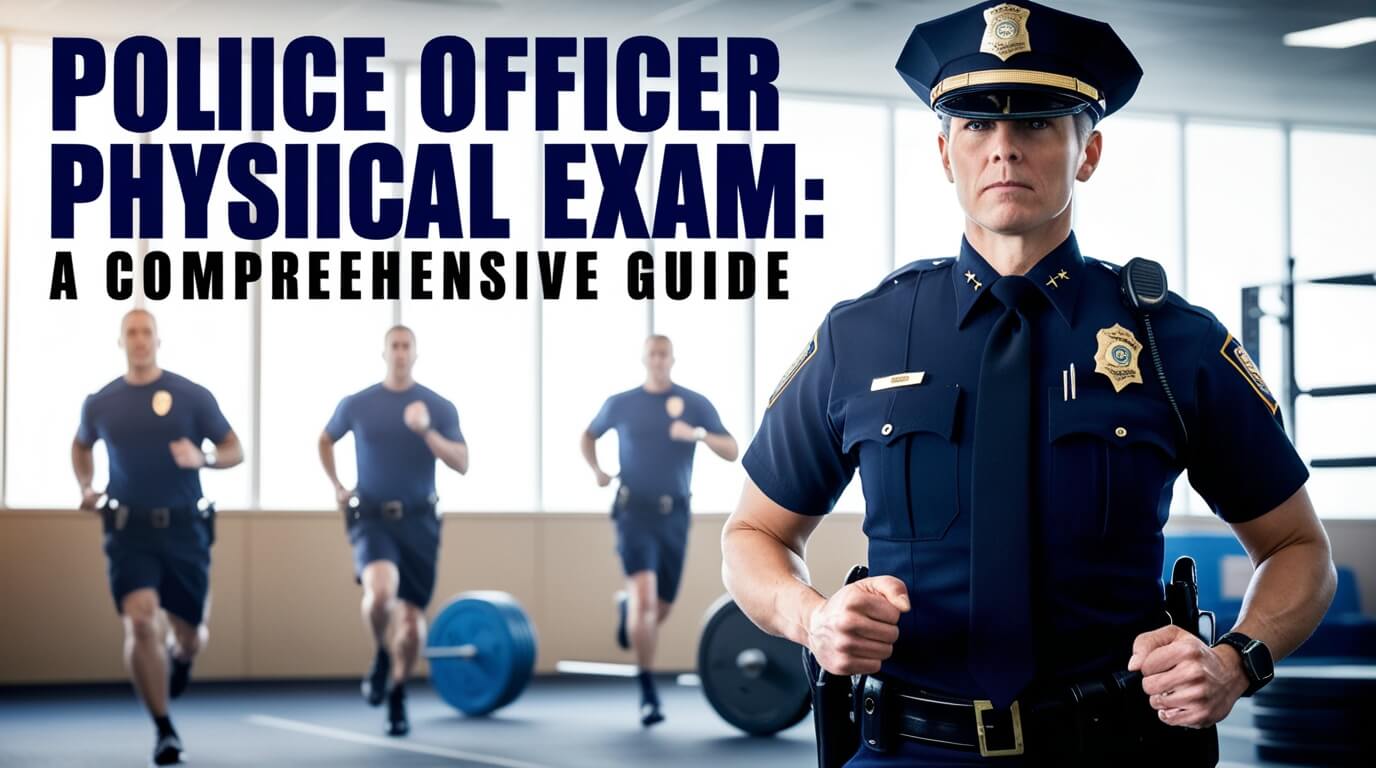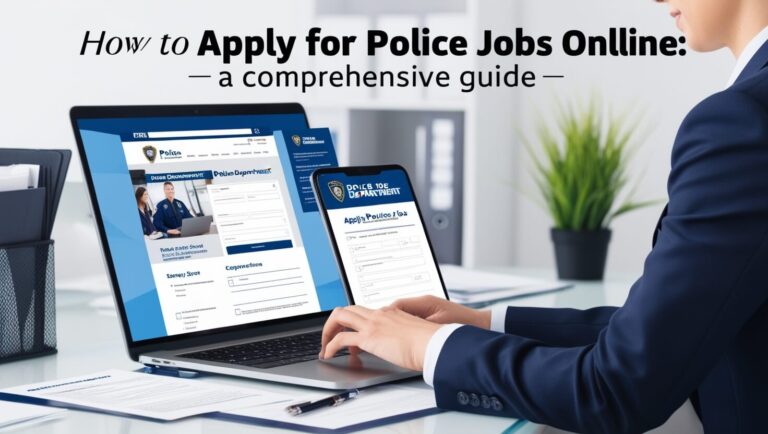Police Officer Physical Exam Details: A Comprehensive Guide

Police officer physical exam details encompass a range of fitness tests designed to assess a candidate’s readiness for the demanding role of law enforcement. These exams typically include aerobic capacity assessments, strength and endurance tests, and agility evaluations.
This guide dives into the specific components of police physical fitness tests, preparation strategies, and what to expect on exam day. We’ll explore common standards, passing requirements, and tips for success from experienced officers.
Introduction to Police Physical Fitness Tests
Law enforcement is a physically demanding profession. Officers must be prepared to chase suspects, restrain uncooperative individuals, and perform rescues in emergencies. The police officer physical exam ensures candidates can handle these challenges.
Importance of Physical Fitness in Law Enforcement
Physical fitness isn’t just about passing a test – it’s crucial for:
- Officer safety
- Public safety
- Job performance
- Long-term health and career longevity
Fit officers are better equipped to handle the daily rigors of police work and respond effectively in high-stress situations.
Overview of the Police Officer Physical Ability Test (PAT)
The Physical Ability Test, or PAT, is a standardized assessment used by many law enforcement agencies. It simulates real-world police tasks and measures a candidate’s overall fitness level.
Key features of the PAT include:
- Timed events
- Job-specific tasks
- Pass/fail scoring
Each agency may have slight variations in their PAT, but the core elements remain consistent across departments.
Components of the Police Officer Physical Exam
Police physical exams typically consist of several key components designed to test different aspects of fitness.
Aerobic Capacity Assessment
Cardiovascular endurance is crucial for officers who may need to pursue suspects on foot or engage in prolonged physical activity.
1.5-mile run
This test measures aerobic fitness and endurance. Candidates must complete the run within a specified time, usually based on age and gender.
Tips for the 1.5-mile run:
- Pace yourself
- Train consistently leading up to the exam
- Practice on various terrains
300-meter sprint
The sprint test assesses anaerobic capacity and speed. It simulates short bursts of intense activity often required in police work.
To excel in the 300-meter sprint:
- Focus on explosive power
- Incorporate interval training in your preparation
- Practice proper running form
Strength and Endurance Tests
Officers need both upper and lower body strength to perform their duties effectively.
Push-ups
Push-ups measure upper body strength and endurance. Most exams require a specific number of push-ups within a set time frame.
Push-up test tips:
- Maintain proper form throughout
- Build up repetitions gradually in training
- Focus on consistent, controlled movements
Sit-ups
Core strength is essential for overall fitness and injury prevention. Sit-up tests typically involve completing as many repetitions as possible in one minute.
Sit-up success strategies:
- Strengthen your core with various exercises
- Practice proper technique to avoid strain
- Pace yourself during the test
Bench press
Some departments include a bench press test to measure upper body strength. Candidates may need to lift a percentage of their body weight or a fixed amount.
Bench press preparation:
- Incorporate weightlifting in your training routine
- Focus on proper form to prevent injury
- Gradually increase weight and repetitions
Agility and Obstacle Course Elements
Agility tests simulate the physical challenges officers face in the field.
Dummy drag
This test involves dragging a weighted dummy a specified distance, simulating rescuing or moving an incapacitated person.
Dummy drag tips:
- Practice proper lifting techniques
- Build lower body and core strength
- Work on grip strength
Fence climb
Officers may need to scale obstacles in pursuit situations. The fence climb assesses upper body strength and agility.
To improve fence climb performance:
- Practice pull-ups and climbing exercises
- Work on explosive leg power
- Train for quick transitions between obstacles
Stair climb
Climbing stairs while carrying additional weight simulates responding to calls in multi-story buildings.
Stair climb training:
- Use a stair climber machine or actual stairs
- Carry weighted vests or backpacks during practice
- Focus on maintaining a steady pace
Common Police Physical Test Standards
While specific requirements vary by agency, several standardized tests are widely used.
Cooper Test Standards
The Cooper Test, developed by Dr. Kenneth Cooper, includes:
- 1.5-mile run
- Push-ups (1 minute)
- Sit-ups (1 minute)
Scores are typically age and gender-adjusted. Many departments use the Cooper standards as a baseline for their physical exams.
POWER Test Requirements
The Police Officer Wellness Evaluation Report (POWER) test includes:
- 1.5-mile run
- Bench press
- Sit and reach (flexibility)
- Sit-ups (1 minute)
This comprehensive test assesses overall fitness and is used by several state and local agencies.
Beep Test (Multi-Stage Fitness Test)
The Beep Test involves running between two points, 20 meters apart, in time with audio beeps. The pace increases as the test progresses.
Benefits of the Beep Test:
- Measures both aerobic capacity and speed
- Requires minimal equipment
- Can be administered to large groups simultaneously
Preparing for the Police Officer Physical Exam
Proper preparation is key to success in the police physical exam.
Developing a Training Plan
Create a balanced training plan that includes:
- Cardiovascular exercise
- Strength training
- Flexibility work
- Rest and recovery
Tailor your plan to address your weaknesses and build on your strengths.
Cardiovascular Conditioning Strategies
Effective cardio training for the police exam includes:
- Long, steady-state runs
- Interval training
- Hill sprints
- Swimming or cycling for low-impact options
Gradually increase intensity and duration as your fitness improves.
Strength Training Exercises
Focus on exercises that target the muscle groups tested in the exam:
- Push-ups and bench press for upper body
- Squats and lunges for lower body
- Planks and sit-ups for core strength
Use a mix of bodyweight exercises and weight training for best results.
Flexibility and Recovery Techniques
Don’t neglect flexibility in your training:
- Incorporate dynamic stretching before workouts
- Practice static stretching post-exercise
- Consider yoga or Pilates for overall flexibility and core strength
Proper recovery is crucial to prevent burnout and injury:
- Get adequate sleep
- Stay hydrated
- Use foam rolling or massage for muscle recovery
What to Expect on Test Day
Knowing what to expect can help calm nerves and improve performance.
Pre-Test Procedures
Before the test, you’ll likely:
- Check in and verify your identity
- Receive a briefing on test procedures
- Complete a health screening questionnaire
- Warm up and stretch
Test Administration Process
The physical exam is typically conducted in stages:
- Height and weight measurements
- Individual fitness components (e.g., push-ups, sit-ups)
- Timed runs or obstacle courses
- Cool-down and recovery period
Examiners will provide instructions and demonstrations for each component.
Scoring and Evaluation Methods
Scoring methods vary but often include:
- Pass/fail thresholds for each component
- Point systems based on performance
- Cumulative scoring across all test elements
Some agencies use percentile rankings to compare candidates’ performances.
Passing Scores and Requirements
Understanding the passing criteria is crucial for exam success.
Minimum Standards for Different Agencies
Passing scores vary widely between departments. For example:
- NYPD requires completing a 1.5-mile run in 14:21 or less
- California Highway Patrol has a 1.5-mile run requirement of 13:35 or less
Research the specific standards for the agencies you’re interested in joining.
Age and Gender Considerations
Many departments adjust their standards based on age and gender:
- Older candidates may have slightly relaxed time requirements
- Female candidates often have different strength test standards
These adjustments aim to create a fair assessment across all demographics.
Retake Policies and Procedures
If you don’t pass on your first attempt:
- Many agencies allow retakes after a waiting period
- Some may limit the number of attempts
- Others might require you to restart the entire application process
Check the specific policies of your target department.
Common Challenges and How to Overcome Them
Preparing for the police physical exam can be daunting, but awareness of common challenges can help you succeed.
Mental Preparation Techniques
Mental toughness is as important as physical fitness:
- Visualize success in each test component
- Practice positive self-talk
- Set realistic goals and celebrate small victories
Dealing with Test Anxiety
To manage anxiety on test day:
- Familiarize yourself with the test format and location
- Practice deep breathing exercises
- Arrive early to allow time to settle your nerves
Addressing Physical Limitations
If you have physical limitations:
- Consult with a doctor or physical therapist
- Focus on improving your overall fitness
- Consider alternative exercises that work around your limitations
Beyond the Initial Test: Ongoing Fitness Requirements
Passing the initial physical exam is just the beginning of a career-long commitment to fitness.
Academy Physical Training
Police academies typically include rigorous physical training:
- Daily workout routines
- Defensive tactics training
- Stress inoculation exercises
Prepare for intense physical and mental challenges during academy training.
In-Service Fitness Standards
Many departments require officers to maintain fitness levels throughout their careers:
- Annual or bi-annual fitness tests
- Ongoing physical training programs
- Wellness initiatives and health screenings
Career-Long Fitness Expectations
Maintaining fitness throughout your career is crucial for:
- Job performance and safety
- Stress management
- Long-term health and well-being
Cultivate habits that support lifelong fitness and wellness.
Special Considerations for Different Police Departments
Physical exam requirements can vary significantly between agencies.
State vs. Local Agency Requirements
State police agencies often have more stringent physical requirements than local departments. Research the specific standards for each agency you’re considering.
Federal Law Enforcement Physical Standards
Federal agencies like the FBI and DEA have their own unique physical fitness tests:
- FBI Physical Fitness Test includes 300-meter sprint, push-ups, sit-ups, and 1.5-mile run
- DEA Physical Task Test incorporates job-specific simulations
Specialized Unit Fitness Criteria
Tactical units like SWAT teams typically have higher fitness standards:
- More challenging obstacle courses
- Higher strength and endurance requirements
- Additional skills tests (e.g., swimming for marine units)
Frequently Asked Questions About Police Physical Exams
Addressing common concerns can help candidates prepare more effectively.
Test Frequency and Validity Periods
How often are tests conducted?
- Initial hiring tests
- Academy entrance and exit tests
- Periodic in-service assessments
Test scores usually remain valid for 6-12 months, depending on the agency.
Accommodations for Injuries or Disabilities
Departments must comply with ADA regulations:
- Reasonable accommodations may be provided for certain disabilities
- Temporary injuries may allow for test deferrals
- Consult with the hiring agency about specific policies
Consequences of Failing the Physical Exam
Failing the physical exam typically results in:
- Disqualification from the current hiring process
- Opportunity to reapply after a waiting period
- Recommendation for fitness improvement before retesting
Tips for Success from Current Officers
Advice from those who’ve been through the process can be invaluable.
Training Advice from Experienced Officers
Seasoned officers recommend:
- Start training well in advance of the test date
- Focus on functional fitness relevant to police work
- Don’t neglect any aspect of physical fitness
Common Mistakes to Avoid
Pitfalls to watch out for:
- Overtraining and risking injury
- Neglecting proper nutrition and rest
- Focusing solely on one aspect of fitness
Long-Term Career Benefits of Physical Fitness
Officers emphasize that fitness is more than just passing a test:
- Reduces risk of job-related injuries
- Improves mental health and stress management
- Enhances overall job performance and career longevity
Conclusion: Embracing the Challenge of Police Physical Fitness
The police officer physical exam is a crucial step in joining law enforcement. It ensures that candidates are prepared for the physical demands of the job and sets the foundation for a career of service.
By understanding the details of the police officer physical exam and preparing thoroughly, you can approach the test with confidence. Remember that physical fitness in law enforcement is not just about passing a test – it’s about being ready to serve and protect your community effectively.
Embrace the challenge, commit to your fitness journey, and you’ll be well on your way to a rewarding career in law enforcement. Stay dedicated, stay fit, and stay safe.






